Bayer R.G. Mechanical Wear Fundamentals and Testing, Revised and Expanded
Подождите немного. Документ загружается.

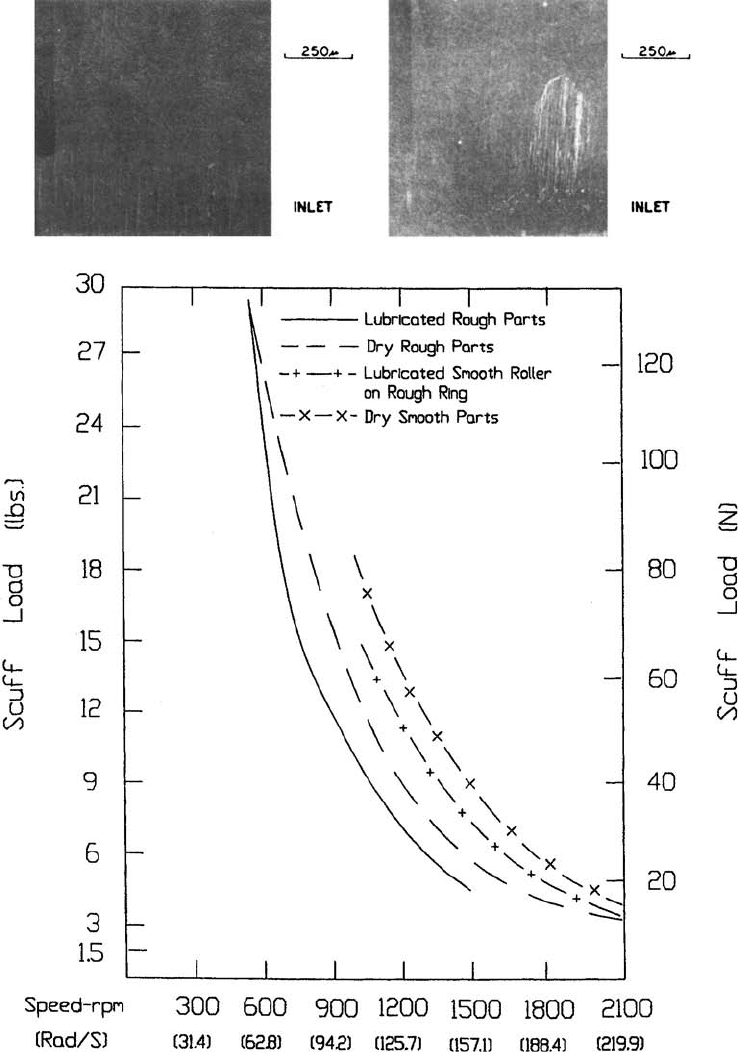
Figure 4.48 Transition in wear behavior under combined rolling and sliding conditions. The wear
rate is much higher for loads and speeds above the curve. ‘‘A’’ shows wear scar morphology for con-
ditions below the curve; ‘‘B’’ shows conditions above the curve. (From Ref. 98, reprinted with per-
mission from ASME.)
Copyright 2004 by Marcel Dekker, Inc. All Rights Reserved.
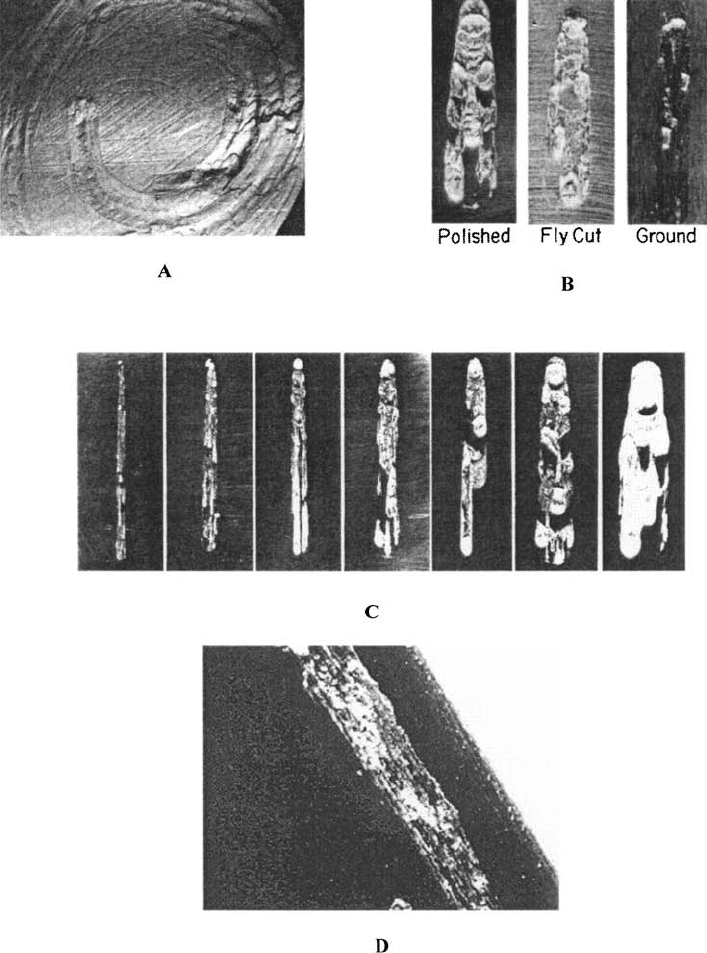
While not limited to these situations, galling tends to be a problem in two types of
situations. One type of situation is when the contact is heavily loaded and the device is
operating infrequently. A valve that tends to be closed most of the time and only occasion-
ally opened would be an example of such a situation. The other type of situ ation is when
Figure 4.49 Examples of wear scars on metal surfaces where galling has occurred. (‘‘A’’ from Ref.
54; ‘‘B’’ and ‘‘C’’ from Ref. 55, reprinted with permission from ASME.)
Copyright 2004 by Marcel Dekker, Inc. All Rights Reserved.
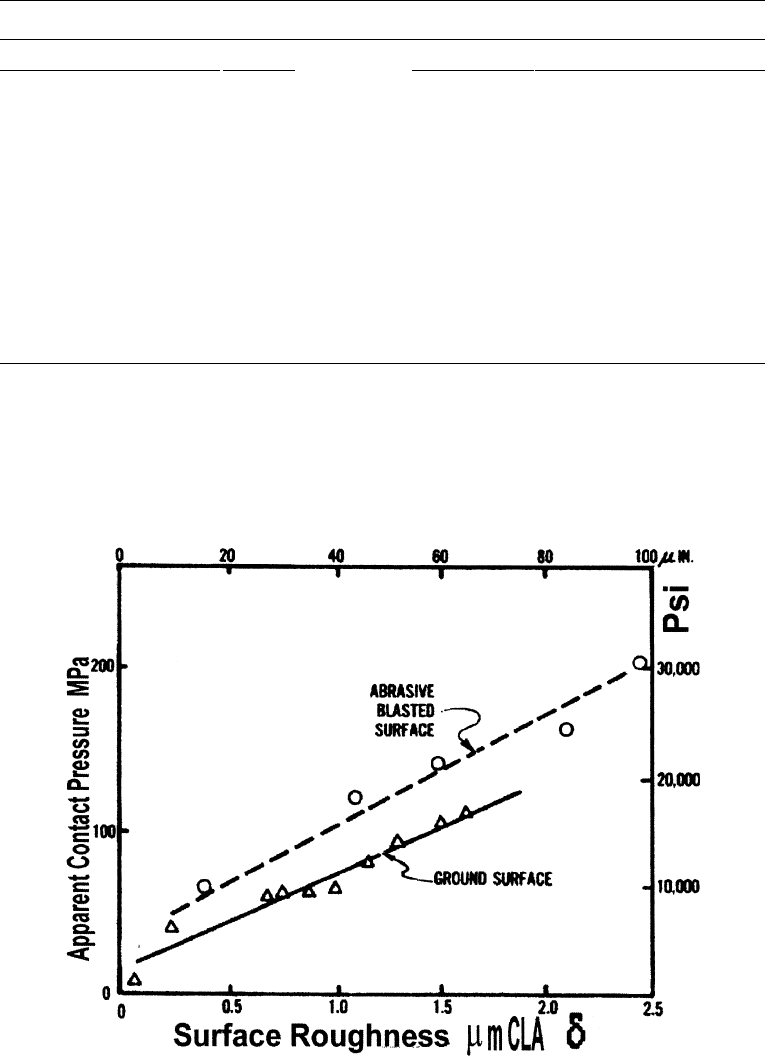
Figure 4.50 Effect of surface roughness on the galling threshold stress. The ordinate is the galling
threshold stress. The data are for a 440C stainless steel (59HRC) against 1020 steel (90HRB). (From
Ref. 54, reprinted with permission from ASME.)
Table 4.1 Threshold Stresses for Galling as a Function of Cycles for Self-mated Stainless Steels
Material Threshold stress (MPA)
Stainless steel Hardness Single rotation
a
Triple rotation
S20161 95 HRB > 104 > 104
28 HRC > 104 > 104
S28200 96 HRB 166 7
S21800 92 HRB > 104 48
T440C 55 HRC 124 14
T304 86 HRB 55 < 7
T430 98 HRB 10 < 7
S42010 50 HRC > 104 21
T420 49 HRC 55 14
S24100 23 HRC 97 14
S45500 48 HRC 97 7
S66286 30 HRC 14 < 7
Type 303 85 HRB 138 < 7
a
ASTM G98 Test Method.
Source: Ref. 73.
Copyright 2004 by Marcel Dekker, Inc. All Rights Reserved.

Table 4.2 Galling Resistance of Material Pairs
400
Series
(soft)
400
Series
(hard)
300
Series
Soft
Steel
Hard
Steel
Cast
Iron
Ductile
Iron
Hastalloy
A and B
Hast-
alloy
C
Hast-
alloy
D Stelite Nitride
Cr
Plate
Bronze
(leaded)
Bronze
A
Bronze
B
Bronze
D
400 Series
SS (soft)
NFFNFS S N FS S F F S F S S
400 Series
SS (hard)
FSFSSSS F SSS S S S S S S
300 Series
SS
FFNNFSS N FSS S S S F S S
Soft steel N S N N S S S N F S S S S S S S S
Hard steel F S F S S S S F S S S S S S S S S
Cast iron S S S S S S S S S S S S S S S S S
Ductile iron S S S S S S S S S S S S S S S S S
Hastalloy
A and B
NFNNFS S N FS S S S S F S S
Hastalloy C F S F F S S S F F S S S S S S S S
Hastelloy D S S S S S S S S S S S S S S S S S
Stellite S S S S S S S S S S S S S S S S S
Nitride F S S S S S S S S S S S S S F S S
Cr plate S S S S S S S S S S S S ? SSSS
Bronze
(leaded)
SSSSSSS S SSS SS S S S S
Bronze A F S F S S S S F S S S F S S F S S
Bronze B S S S S S S S S S S S S S S F S S
Bronze D S S S S S S S S S S S S S S S S S
Level of resistence: S, satisfactory; F, fair, N, little or none.
Source: Ref. 74.
Copyright 2004 by Marcel Dekker, Inc. All Rights Reserved.
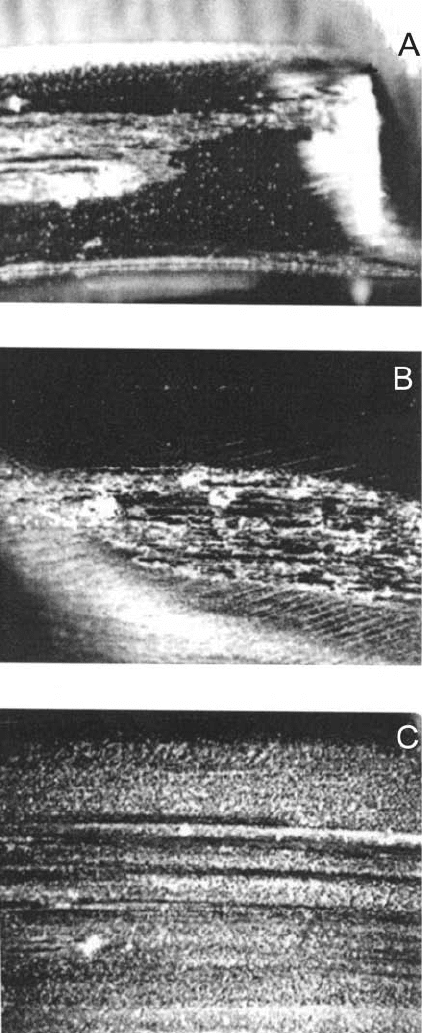
Figure 4.51 Wear scars showing the effect of increased hardness on galling, ‘‘A’’ and ‘‘B’’ are
examples of the galling that took place on lug prior to hardening the surface. ‘‘C’’ shows the wear
on the same surface after the surfaces were nitrided.
Copyright 2004 by Marcel Dekker, Inc. All Rights Reserved.
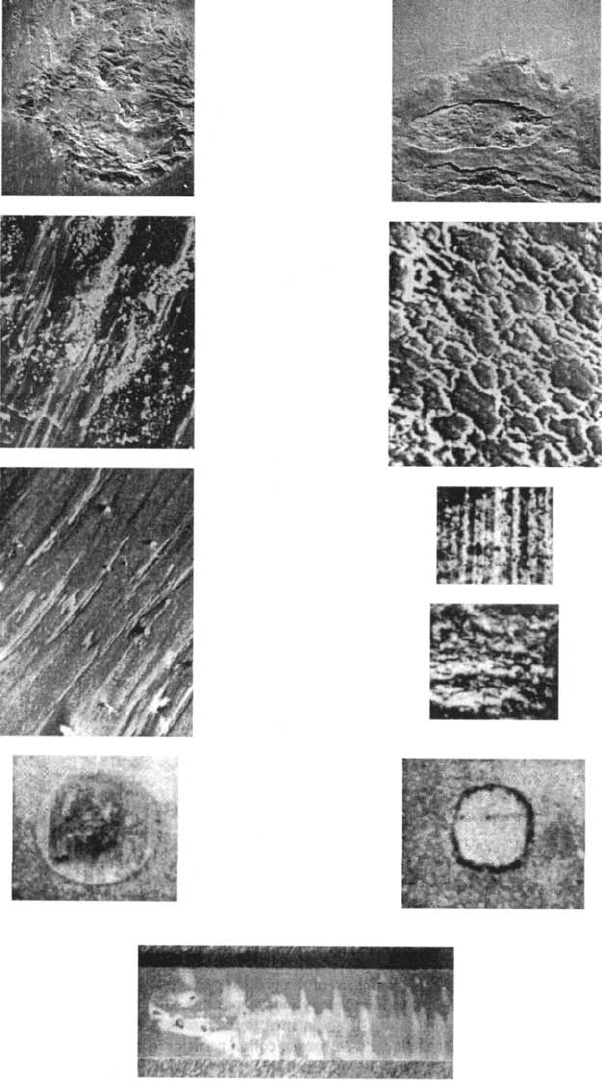
Figure 4.52 Examples of fretting wear scars on metal surfaces. (From Refs. 24, 50, 99, and 100,
reprinted with permission from ASME, Elsevier Sequoia S.A., and ASTM.)
Copyright 2004 by Marcel Dekker, Inc. All Rights Reserved.
there are tight tolerances between almost or nearly conforming surfaces such as a piston in
a cylind er. While nominal contact pressures in this type of situation are often small or 0,
galling tends to occur as a result of high contact stresses caused by misalignment and
errors-in-form. When galling occurs in these and other applications, the concern is gener-
ally not with material loss but binding that results from the size of the protuberances and
debris that galling causes. In addition to the identification of galls in these situations, com-
mon manifestations of a galling problem are seizure, increased difficulty in operating a
device, and scouring. The minimal criterion for avoiding galling in unlubricated situations
is to design so that the maximum contact pressure is below the threshold galling stress.
A design approach to a galling wear problem is discussed in Sec. 5.16 in EDW 2E.
4.6 FRETTING
When the amplitude of a reciprocating sliding motion is less than a few millimeters, the
motion is generally referred to as fretting or fretting motion. The wear that results from
this type of motion is called fretting wear, or simply fretting. If oxide formation is
involved in the wear process , it is often called fretting corrosion. Fretting wear is the
more general form and may occur with any material; fretting corrosion is generally
limited to non-noble metals. Examples of fretting wear and fretting corrosion wear scars
are shown in Fig. 4.52. As illustrated by the micrographs in the figure, fretting wear scar
features tend to be fine. In addition, the morphology of fretting scars can be similar to
that resulting from unidirectional and larger amplitude motion. However, as illustrated
in these examples, striations, directionality, and evidence of adhesion tend to be less
pronounced with fretting scars than with gross sliding. Also wear debris in fretting situa-
tions tends to be finer than in many other sliding situations. This modified appearance,
the presence of fine and often oxidized debris, and the possibility of small amplitude
vibrations are general indicators of fretting wear (58).
Fretting wear can involve the transition from non-abrasive to abrasive wear beha-
vior (58). In the initial stages of fretting wear, it is a non-abrasive, typically resulting from
adhesive, repeated-cycle deformation, or chemical wear mechani sms, or some combination
of these. With the entrapment of work-hardened and oxidized wear debris from these
mechanisms in the contact region abrasive wear behavior can become dominant. When
this occurs, single-cycle deformation mechanisms tend to become significant and wear is
generally accelerated by the abrasion. When this does not occur, longer-term behavior
is characteristic of non-abrasive sliding wear. In such cases, repeated-cycle deformation
or chemical wear mech anism likely dominates wear behavior. However, adhesive, thermal
and tribofilm mechanisms are also possible as dominating and contributing mechanisms to
the overall wear [(41,59–64) See Secs. 5.6 and 7.3 in EDW 2E].
While the mechanisms are the same for general sliding and fretting, there are some
specific trends in fretting situations. For fretting amplitudes less than 1 mm, the dimen-
sionless wear rate, O, defined in Eqs. (4.4) and (4.5) tends to dependen on the amplitude
and load (58,60,61,63). Trend s with amplitude and load are shown in Figs. 4.53 and 4.54,
respectively. Analysis of the data suggests the following relationship between O and slip
amplitude, e, in the region between 10 and 100 mm. Above and below that range, it tends
to be independent of amplitude. Wear has been observed with slip amplitudes as low as
0.06 mm (65,66).
O / e
2
ð4:6Þ
Copyright 2004 by Marcel Dekker, Inc. All Rights Reserved.
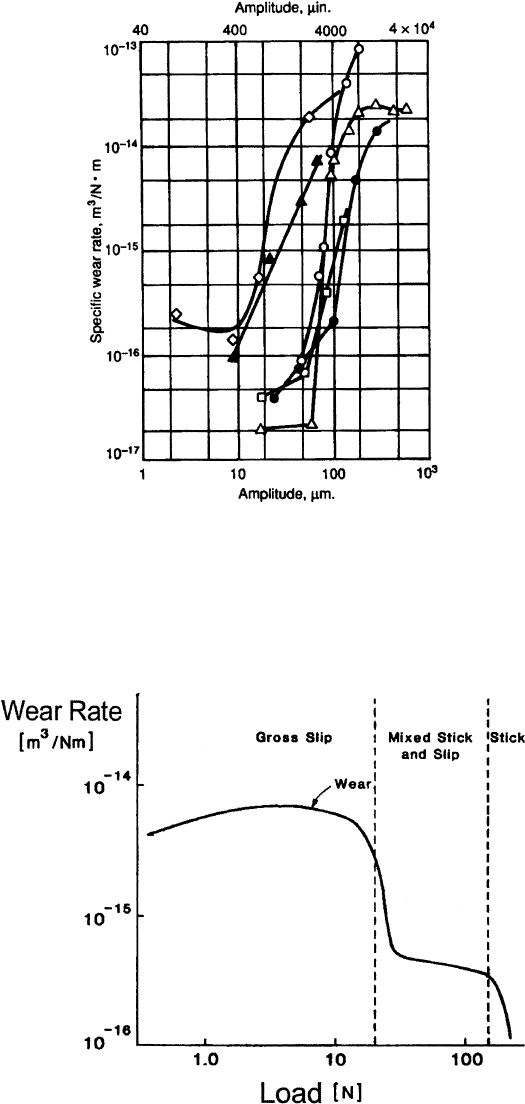
Figure 4.54 Example of the effect of load on slip amplitude and wear rate in fretting. (From Ref.
61, reprinted with permission from ASME.)
Figure 4.53 Effect of slip amplitude on wear rate. Each curve is from different investigations.
(From Ref. 58, reprinted with permission from ASM International.)
Copyright 2004 by Marcel Dekker, Inc. All Rights Reserved.
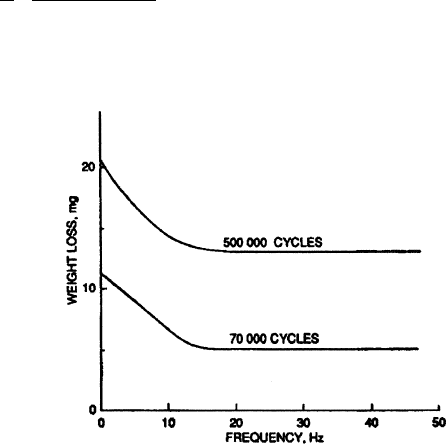
The data also suggest the following relationship with load, P:
O / P
0:31:5
ð4:7Þ
While the frequency of the motion is generally not a significant factor, it can be
in some situations, particularly unlubricated situations (58,61). With unlubricated
metals, wear rates tend to be inversely dependent on frequency below 10–20 Hz,
because of increased time for oxide growth at lower frequencies. This behavior is
shown in Fig. 4.55. Wear rates can also be affected by frequency as a result of the
effect that frequency has on the power (energy per unit time) that is dissipated in
the contact and consequently temperature. Generally, this is only significant in situa-
tions where there is the potential to develop high enough temperatures to affect wear
behavior (41,62,63 ). In situati ons where this does not occur, there is no apparent effect
over several orders of magnitude change in frequency. For exampl e, under some con-
ditions, wear rates of unlubricated steel couples have been found to be independent of
frequency in the range between 100 and 210
5
Hz (67). An additional illustration of the
typical trend with frequency can be found in Fig. 4.58.
While a small temperature increase of 20–30
C is likely in many fretting situations,
larger increases, such as several hundred degrees, are also possible in others (41,62,63).
In fretting situations, temperatures can be obtained by treating the interface as a sta-
tionary heat source. Equation (4.8) is an approximate relat ionship for the temperature
rise, DT, based on a linearized form of the first law of heat flow. C is the power dis-
sipated and k
m
’s are the thermal conductivities. l
b
’s are the distance from the surface
at which there is no temperature rise in each body. A is the apparent area for the bulk
temperature rise and is the real area for the fla sh temperature.
DT ¼
c
A
l
b1
l
b2
k
ml
l
b2
þ k
m2
l
b1
ð4:8Þ
Figure 4.55 Example of the effect of frequency on fretting wear. (From Ref. 58, reprinted with
permission from ASM International.)
Copyright 2004 by Marcel Dekker, Inc. All Rights Reserved.
Because of friction and the compliance of surfaces, small amplitude oscillatory dis-
placements of bodies do not necessarily result in slip at the interface (68,69). There is a
threshold displacement, which is required for slip to occur. Three regions of slip are gen-
erally identified in fretting situations. These are indicated on the graph in Fig. 4.54.
Below the threshold is the stick region. In the stick region, there is no slip. However,
some damage may occur as a result of plastic flow and repeated deflection. Above the
threshold, there are two regions, the stick-slip and gross slip regions. The stick-slip
region occurs at lower displacements than the gross slip region. In the gross slip region,
there is slip across the entire contact and it is equal to the displacement of the bodies. In
the middle region, there are limited and varying amounts of slip across the interface.
Wear takes place in both these regions. Normalized wear rates tend to be lower in
the mixed region as a result of reduced slip and tend to be more sensitive to frequency,
as indicated in Fig. 4.58 (67). Frett ing maps are used to identify combinations of para-
meters, most often displacement and load or load and shear force, which represent
boundaries between the three regions of slip behavior. Examples of fretting maps are
shown in Fig. 4.56. These maps indicate the general progression from one region to
the other as a function of load, fretting displacement amplitude, and shear force. The
progression of slip is illustrated in Fig. 4.57 for a point contact. In the simulation of
a fretting contact between a sphere and a plane, stress analysis shows that there is a
threshold for slip to take place and when it does, it does not occur uniformly over
the entire contact surface (70,71). It starts in an annulus at the edge of the contact
region. The width of this annulus grows with increasing displacement amplitude until
slip occurs over the entire contact region. In the analysis, an applied shear force simu-
lates displacement. The slip region is defined as the region over which the applied shear
stress exceeds the product of the contact pressure and the static coefficient of friction.
Fretting fatigue is another phenomenon that results from fretting motion. It
involves progressive damage to a solid surface and leads to the formation of fatigue
cracks (72). It is a combination of normal structural fatigue, which results from cyclic
strain and stress, and fretting wear. An example of a situation where fretting fatigue
occurs is the contact between a clamp and a flexing beam. The flexing motion of the
beam could result in slip between the clamp surface and the beam surface. In fretting
fatigue, the wear that is caused by the fretting can accelerate the formation of fatigue
cracks, which then propagate through the material, leading to fracture of the compo-
nent. An example of typical fretting fatigue behavior as a function of frequency is shown
in Fig. 4.58, along with the corresponding behavior of fretting wear in both the gross
slip and partial slip regions.
The general methods to control and reduce sliding wear can be used to reduce and
control fretting wear. An additional element to consider with fretting is the possible
transition to abrasive wear. Materials and designs should be chosen to eliminate the
accumulation of debris harder than the surfaces involved. This may be accomplished
by providing paths for the debris to escape or lubrication methods designed to flush
out debris. There is an additional way for resolving fretting problems. Fretting motions
are generally not intended or required. They are either su perimposed on an intended
motion, such as fretting motions generated in an impact situation and at the reversal
of directions or occur in nominally stationary situations, such as clamped joints or
mated electrical contact, as a result of vibrations, actuation cycles, or thermal cycling.
Consequently, the elimination or reduction of these motions offers another possibility
for solving fretting wear problems. One approach would be to eliminate or isolate the
cause or source of these motions. For example, in the case where these are caused by
Copyright 2004 by Marcel Dekker, Inc. All Rights Reserved.
